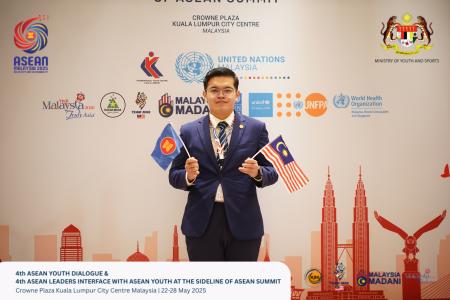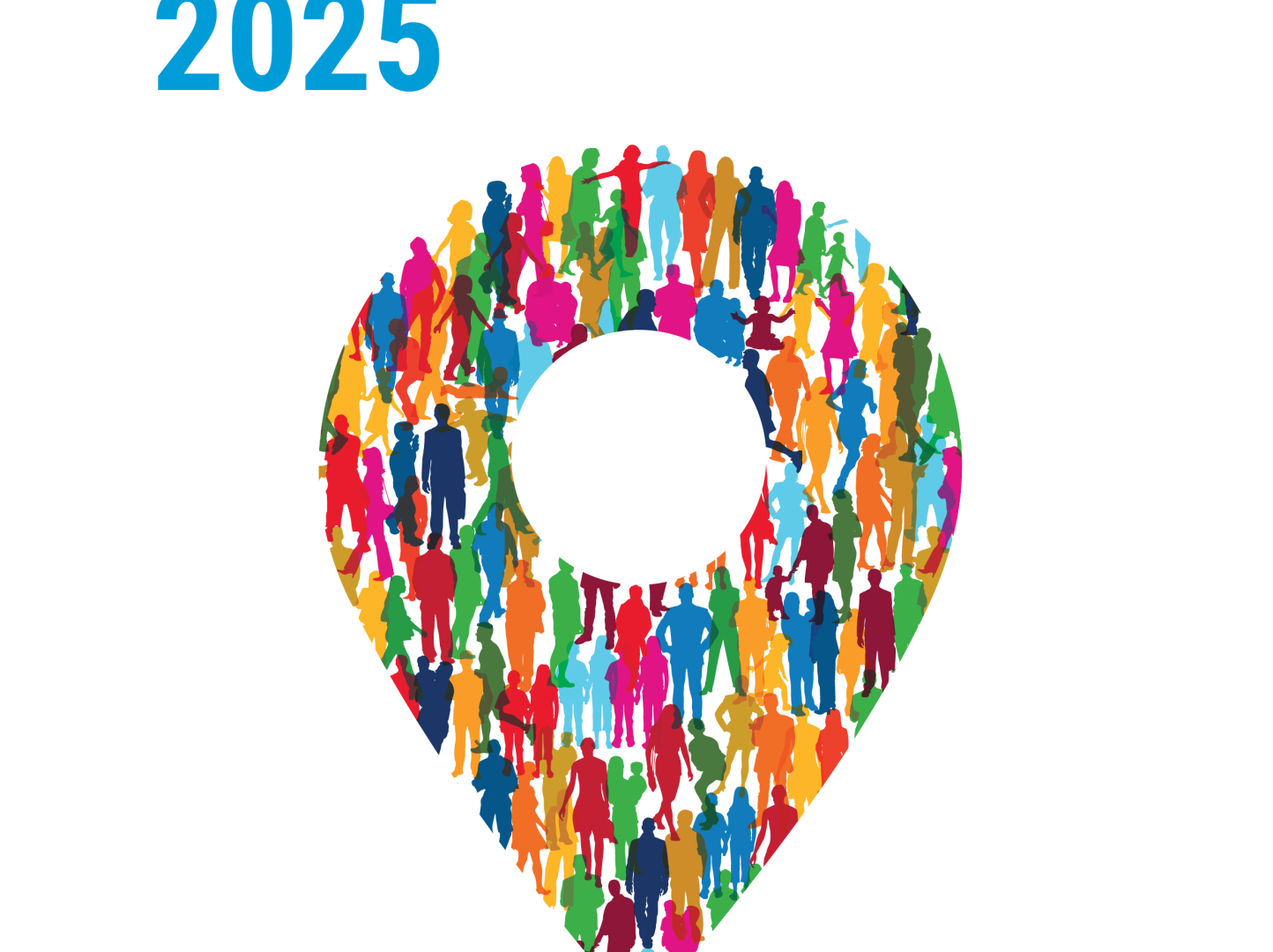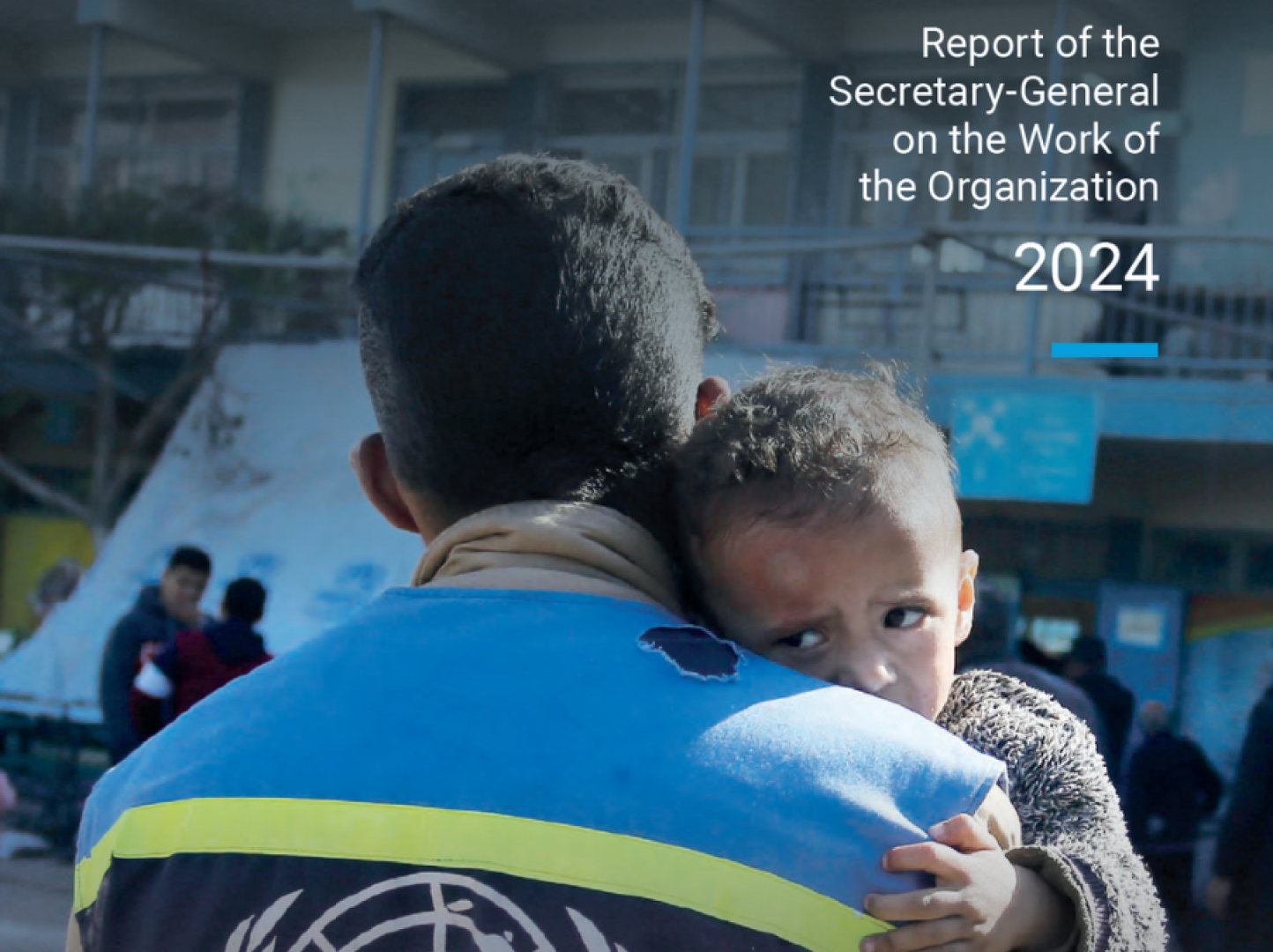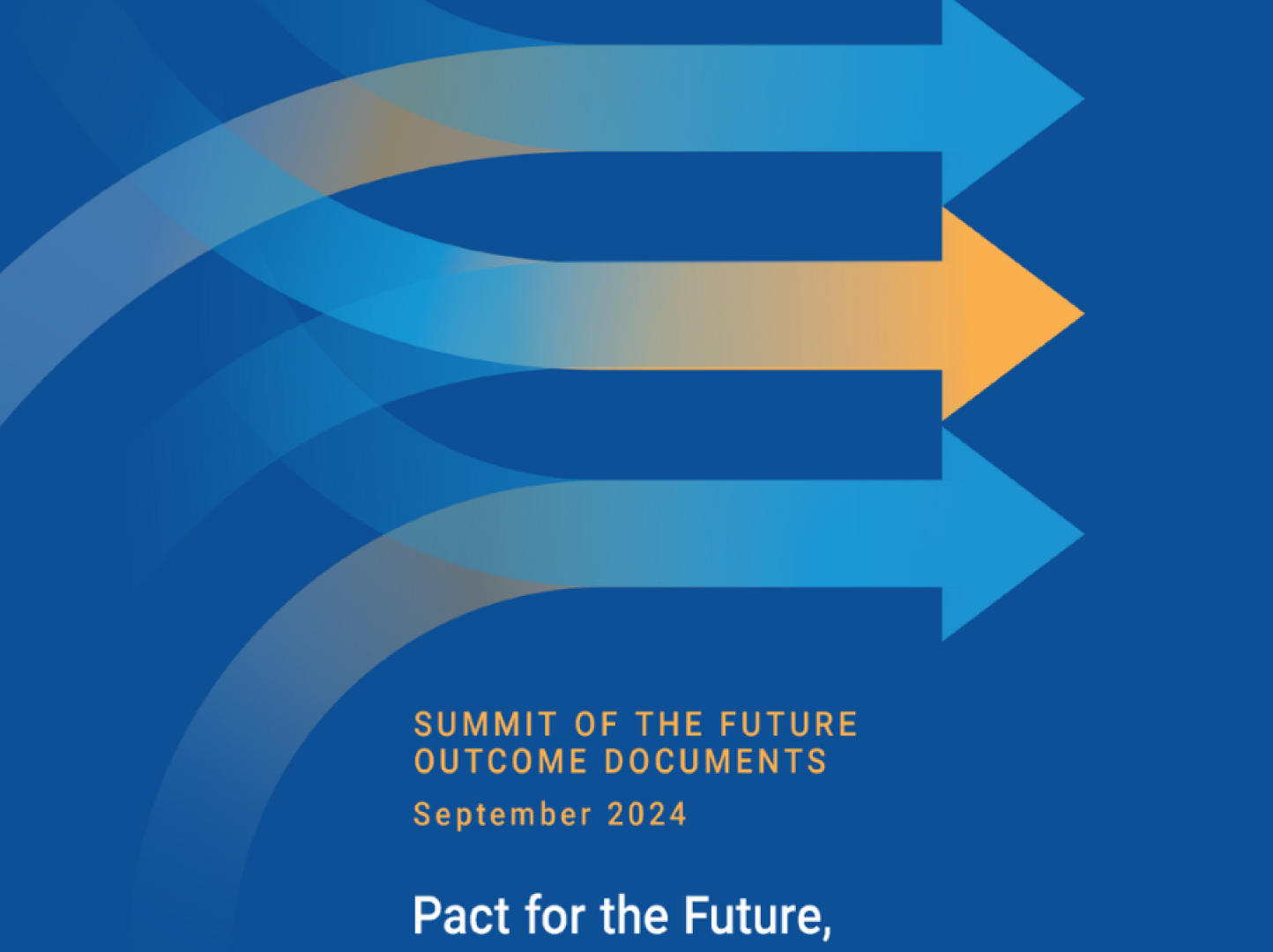Latest
Speech
18 November 2025
Resident Coordinator's speech: Workshop on the Pact for the Future - Measuring Progress Beyond Ringgit and Sen
Learn more
Speech
08 November 2025
Resident Coordinator's speech: Closing of the WOWED Project – Women of Will
Learn more
Speech
14 October 2025
Resident Coordinator's speech: Kuala Lumpur Sustainability Summit (KLSS) 2025
Learn more
Latest
The Sustainable Development Goals in Malaysia, Singapore and Brunei Darussalam
The Sustainable Development Goals are a global call to action to end poverty, protect the earth’s environment and climate, and ensure that people everywhere can enjoy peace and prosperity. These are the goals the UN is working on in Malaysia:
Take Action
10 July 2024
Summit of the Future
The Summit is a high-level event, bringing world leaders together to forge a new international consensus on how we deliver a better present and safeguard the future.
1 of 5
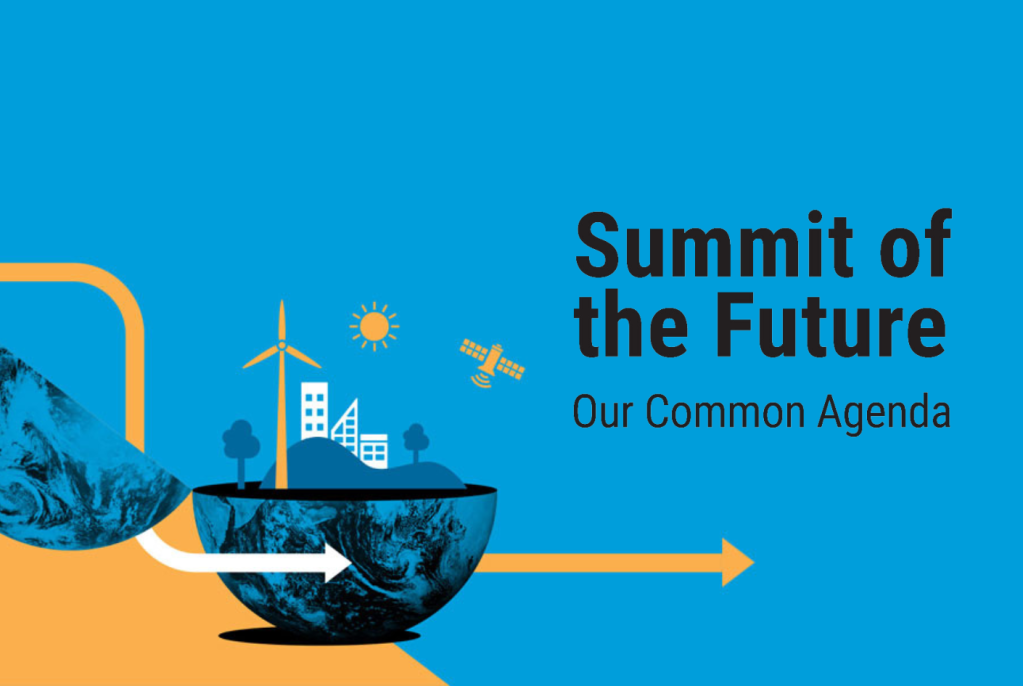
Publication
04 July 2024
UN Country Results Report Malaysia 2023: Supporting Malaysia’s Path to Sustainability and Inclusion in Turbulent Times
The 2023 Country Results Report provides a spotlight on the key results of the UN system’s programming and advocacy in 2023. Working under the umbrella of the UN Sustainable Development Cooperation Framework 2021-2025 (CF) and drawing on information available on our website via the UN INFO platform, this report reflects the dynamism of 2023. In line with the UN development system reforms, the UNCT continues to deliver tangible results, under the leadership and coordination of the Resident Coordinator.The UNCT, in collaboration with its diverse partners, works towards fostering an equitable and inclusive economy guided by a human rights approach to development. Programmes include enhancing the skills of women entrepreneurs, combating forced and child labour in the palm oil industry, expanding social protection, and ensuring youth access to technical and vocational education and training (TVET). Furthermore, the UN remains dedicated to assisting the Government in safeguarding Malaysia's abundant biodiversity, protecting the environment and combating climate change. The UN remains resolute in fulfilling its commitments to the Government and civil society by actively exploring new opportunities to accelerate SDG progress through systems and institutional strengthening.
1 of 5
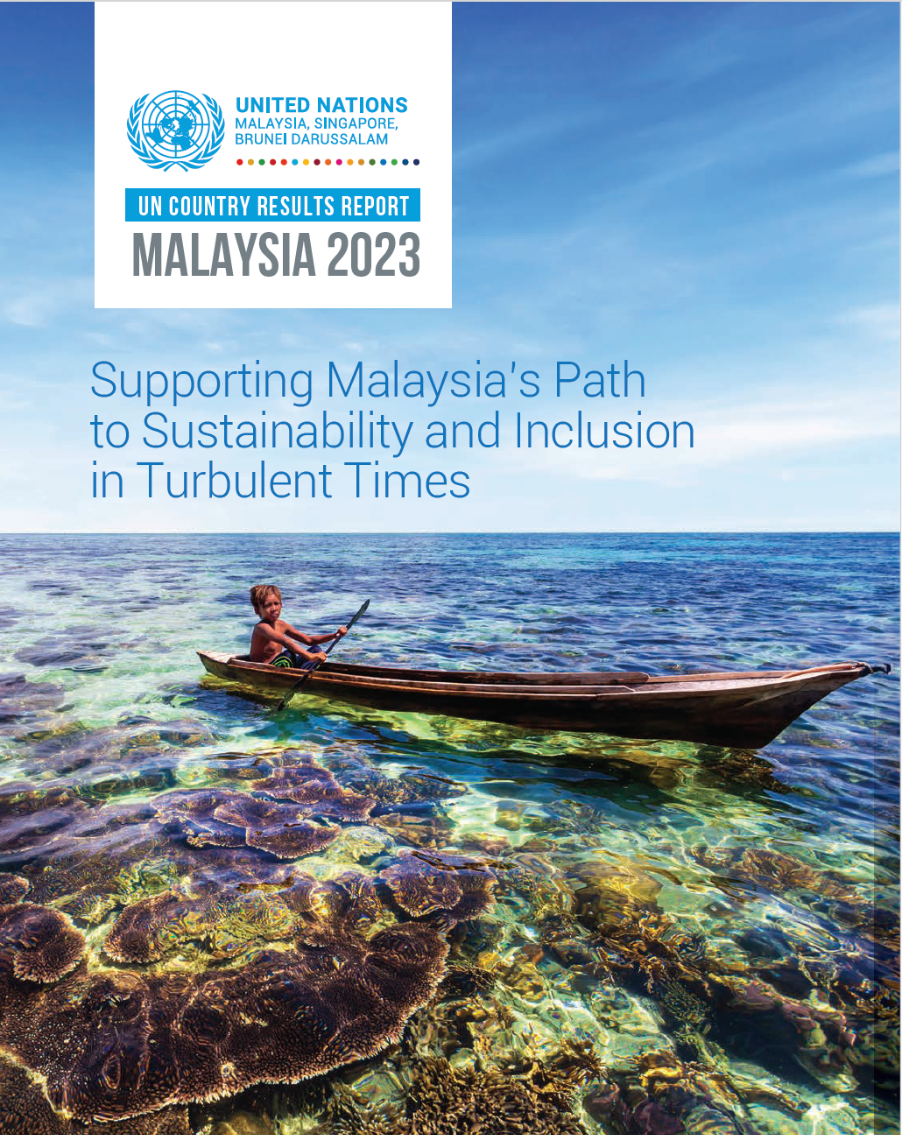
Story
20 June 2024
#WorldRefugeeDay: Local Municipal Council leads the way in finding solutions for harmonious living of residents – Malaysians and refugees alike
Read the original story hereIt was the morning of Eid Al-Adha. Since the early hours, a neighbourhood field in the district of Ampang Jaya an hour outside Kuala Lumpur became the gathering point for communities of Muslim refugees and migrants.Myanmar refugee Rashidah and her seven children were among them. Her family had gathered on the field with others from the neighbourhood to observe Eid Al-Adha with a ritual sacrifice of livestock, or qurban.Eid Al-Adha is a revered observance among Muslims, coinciding with the final rites of the Hajj pilgrimage in Saudi Arabia. Devout Muslims slaughter livestock and share two-thirds of the meat with the poor.“We can’t travel to perform the holy pilgrimage to Mekah, so this is a way to practice our faith,” Rashidah said.Rashidah has lived as a refugee in Malaysia for 37 years, after her family fled persecution in Myanmar. A single mother raising young children alone, Rashidah earned a wage for years working as a cleaner. Now, her grown sons also work to augment the family income.“We all pooled our money to buy a cow for qurban this year,” said Rashidah. “All the meat will be distributed to the mosque and to the poor – Malaysians and non-Malaysians. We’re not keeping any meat. We will give to all who need it.”There are currently approximately 189,000 refugees and asylum-seekers in Malaysia, some of whom are Muslim. Many, like Rashidah, practice Eid Al-Adha with the ritual sacrifice of livestock animals.“We contacted the Municipal Council of Ampang Jaya - the local authority responsible for the cleanliness and well-being of residents in the area – to seek a discussion on helping refugees comply with standardised procedures when conducting qurban,” said Adli Zakuan Zairakithnaini, UNHCR head of humanitarian affairs.“Refugees have no legal status in the country. Living in the fringes of society, especially in a foreign land, it is understandable how some refugee communities may lack full understanding of domestic regulations, procedures, and practices, and the impact of their behaviour to local communities.“Our priority is to ensure these gaps in knowledge are addressed to reduce any friction between refugees and host communities that may arise from misunderstandings. Our interest is that refugees conduct practices like qurban within the parameters of local regulations and procedures.”Dr Ani Ahmad, Chairman of the Municipal Council of Ampang Jaya, explained the Municipal Council’s intentions to better regulate qurban conducted by foreigners in the area.“It is sometimes difficult for foreigners to conduct qurban at mosques or designated slaughter centres. Often, they resort to performing the qurban ritual at inappropriate locations like vacant lots, in housing areas, or industrial areas. This is often disruptive, unhygienic, and insensitive to the sentiments of local populations,” said Dr Ani.UNHCR, together with Government departments involved in managing the qurban ritual as well as representatives from local mosques, were invited by the Municipal Council for a series of discussions on how qurban was conducted by foreigners, including refugees, and how to better manage it collectively.“The Municipal Council designated four locations where foreigners could conduct qurban in the district,” said Dr Ani. “We agreed to provide amenities such as tents, clean water, waste disposal bins, cleaners, and traffic control.” Ahead of Eid Al-Adha, UNHCR rapidly produced simple and clear guidance for refugee communities on local norms and practices, as well as regulations and agreed procedures around conducting livestock sacrifice, including safety and hygiene practices, as well as consequences and penalties for non-compliance.These were then mass distributed through a variety of channels used for communicating with refugees, including through digital instant messaging platforms and UNHCR’s Refugee-Malaysia.org information portal. UNHCR also engaged refugee community representatives on the ground to disseminate the information and help answer questions.On the morning of Eid Al-Adha, a UNHCR team was on the ground to monitor the implementation of this new procedure. Officers from the Municipal Council, including Dr Ani, were also present.“Refugee community focal points had informed the Municipal Council in advance how many families would be conducting qurban in each location and how many cows would be sacrificed,” said Adli. “With structures and plans in place, we saw a smooth implementation of the qurban ritual in the four designated locations.“UNHCR is deeply appreciative to the Municipal Council of Ampang Jaya for its exemplary leadership in identifying and implementing a solution that benefits the well-being of all residents – refugees, migrants, and Malaysians alike.”Dr Ani said that managing the qurban rituals this way reduced complaints from local residents, especially around issues of the disruption to neighbourhoods, cleanliness and hygiene of slaughter locations, and traffic congestion while activities were underway.“This kind of cooperation helps the Municipal Council more effectively carry out our responsibilities. It creates a harmonious environment with the local population and ensures every segment of society has access to better living conditions,” said Dr Ani. “We hope to see more of such cooperation in the future in line with the aspirations of the Sustainable Development Goals.”
1 of 5

Story
13 June 2024
UN in Malaysia partners with Ministry of Foreign Affairs on Summit of the Future briefings
In the lead up to of the Summit of the Future (SOTF), the UN in Malaysia, in partnership with the Ministry of Foreign Affairs Malaysia, organized two briefing sessions for government and civil society representatives on 30 May 2024. The Summit of the Future will be convened during the 79th session of the UN General Assembly, bringing world leaders together on 22-23 September to forge a new international consensus to safeguard the future and turbocharge the Sustainable Development Goals (SDGs).The first consultation involved government representatives from 15 Ministries and 5 Agencies. The second session gathered over 20 CSOs, NGOs and academia. These briefings aimed to offer an in-depth overview of the SOTF and unpack its outcome – the draft Pact for the Future plus its two annexes: the Declaration on Future Generations and the Global Digital Compact.The briefings were led by Ms. Karima El Korri, the United Nations Resident Coordinator (UNRC) and Mr. Adlan Mohd Shaffieq, Undersecretary, Multilateral Political Division from the Ministry of Foreign Affairs in Malaysia (MoFA). When addressing both Government and CSO representatives, Mr. Adlan Mohd Shaffieq acknowledged the UN Secretary General’s call for action and emphasized the Government of Malaysia’s commitment to the SOTF and full engagement in the intergovernmental negotiations. He also highlighted the importance of these consultations to gather further inputs into the SOTF outcome documents. RC Karima El Korri described the Summit of the Future as “a unique opportunity to rethink our approaches and reinvigorate collective action by aligning multilateral institutions and frameworks with the political, social, and economic realities of today’s world.” She commended Malaysia’s engagement and determination to follow through on internationally-agreed frameworks.”Richard Marshall, UN Senior Economist and Juanita Joseph, Head, Office of the UN Resident Coordinator & Strategic Planner, delivered comprehensive presentations on process and outcomes and an insightful reading into the draft Pact for the Future and two annexes. The sessions provided an avenue for participants to familiarize themselves with the Summit of the Future process and discuss the objectives, principles, actions and commitments detailed in the drafts of the Pact documents. At the conclusion of the briefings, both the UN in Malaysia and the Ministry of Foreign Affairs reaffirmed the crucial role of government agencies and civil society organizations in translating the Pact of the Future commitment and actions into actions and solutions at country-level, building on promising SDG progress to raise the ambitions and deliver an inclusive equitable, inclusive, prosperous and sustainable future for all in Malaysia.
1 of 5
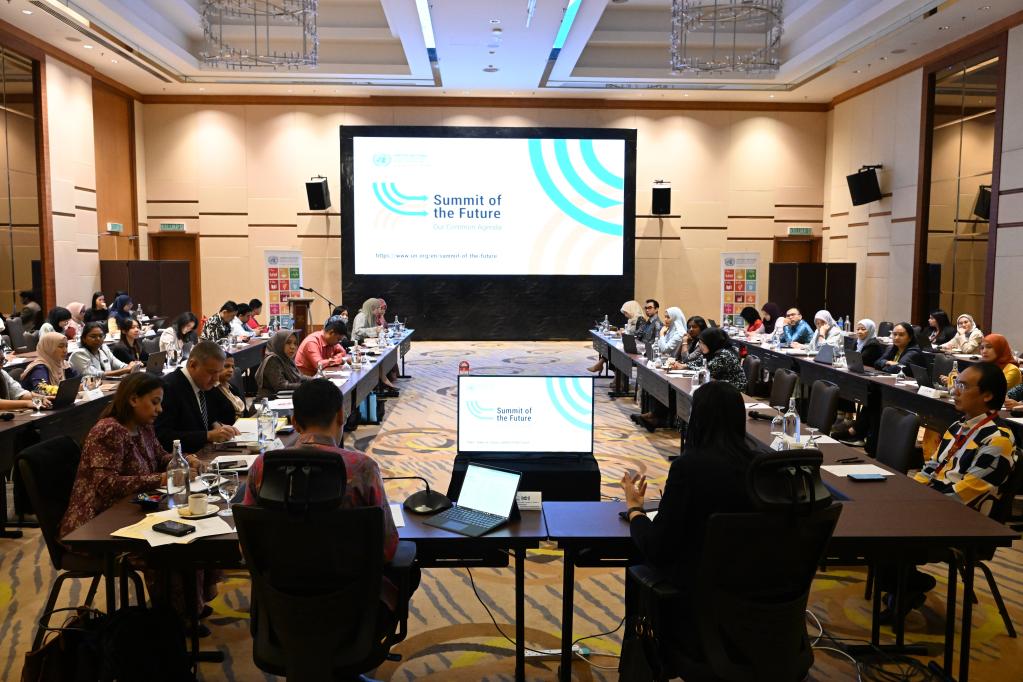
Take Action
09 September 2023
Act Now for Our Common Future
Embrace the possible that’s the call of the 17 Sustainable Development Goals, a blueprint for a better world.
Everyone can join the global movement for change.
ActNow is the United Nations campaign to inspire people to act for the Sustainable Development Goals.
1 of 5

Story
18 September 2025
For Humanity: Report of the Secretary-General on the Work of the Organization 2025
Download the report hereVisit the original page hereThe present report looks back on a year of headwinds and hope for humanity. In 2024, deadly conflicts continued to inflict massive suffering and displacement. Our planet shattered new heat records. Poverty, hunger and inequalities rose, while transformative technologies such as artificial intelligence expanded without effective guardrails, and international law and human rights were trampled.In the face of such challenges, the United Nations worked to translate our shared values into meaningful action on the ground for people around the world.The present report demonstrates that despite enormously trying times – indeed, precisely because of them – we can and must keep pushing for the better world that we know is within reach. We will renew our efforts to achieve peace, foster sustainable development and defend and uphold human rights, for all of humanity.The present report demonstrates that despite enormously trying times – indeed, precisely because of them – we can and must keep pushing for the better world that we know is within reach.ANTÓNIO GUTERRES, United Nations Secretary-General
1 of 5

Story
09 September 2025
Free mobile clinics improve refugees access to health in Kelantan, Kedah and Pahang
Read the original article hereOver 2,300 refugees and asylum-seekers received primary healthcare and health education closer to home through mobile clinics, at no cost.This initiative, supported by the World Health Organization (WHO) and United Nations High Commissioner for Refugees (UNHCR) - funded through the Malaysia–UN SDG Trust Fund, also addresses key barriers faced by refugees and asylum seekers in mainly accessing primary healthcare, particularly the high cost of services and limited proximity to facilities. The mobile clinics aim to reach communities in more remote areas by providing consultations, maternal and child health services, health screenings and essential medicines at no cost to patients. Additionally, UNHCR and WHO supported over 270 highly vulnerable patients including children in need of urgent hospital-based treatment. The project is implemented in partnerships with local NGOs – Malaysian Relief Agency and Tzu Chi Foundation.Voices from the communityA team from WHO visited one of the mobile clinics in Kadok, Kelantan, where they spoke with refugee patients, health care providers and support staff. The patients shared how the service has helped ease the financial burden of accessing healthcare. “Private clinics are expensive and even government clinics cost more than we can afford. Sometimes just getting to the clinic itself is costly,” said Nur Samira, a 44-year-old single mother from the refugee community in Kadok. “Now I can get my monthly medicine for free, which helps me keep my health stable.”Others noted that the clinic has reduced the need to delay treatment. “Before, I might have waited until I was very sick before seeking help, because of the cost and fear of being stopped on the way to the hospital,” shared Omar, a 25-year-old construction labourer. “With this mobile clinic, our burden is eased and our health has improved.” The project also addresses language barriers by ensuring volunteers are available to help patients understand medical advice and health education materials. “There is always someone to translate and explain clearly what the doctors say,” said Nur Samira.“Healthcare is a fundamental human right. This project ensures that even the most marginalised members of society can receive timely and respectful care, ensuring no one is left behind,” said Dr Rabindra Abeyasinghe, WHO Representative to Malaysia, Brunei Darussalam and Singapore.UNHCR Malaysia emphasised the importance of maintaining such outreach efforts. “For refugees, the ability to access healthcare without fear or financial hardship can be life-changing. Mobile clinics are a practical way to close the gap,” said Louise Aubin, UNHCR Representative in Malaysia.Expanding careThe clinic visits are implemented with the support of partners such as the Malaysian Relief Agency and the Tzu Chi Foundation. These organizations coordinate with Ministry of Health clinics to ensure services are aligned with national standards. In addition to providing treatment, the outreach clinic staff help identify individuals who need follow-up care and issue referral letters to public hospitals. Mobile clinics in Kelantan form part of a larger outreach effort expected to reach more than 3,200 people nationwide by the end of the project in 2025. As of July 2025, over 2,300 people have received primary healthcare services, while efforts were also directed at supporting 273 highly vulnerable patients such as children of refugees and asylum seekers in need of urgent medical interventions.Community members are hopeful that the initiative will continue beyond its current timeline. “This clinic is necessary for us. It lessens our financial burden and improves our community’s health,” said Omar. “If there could be more clinics like this in Kelantan, it would be even easier and safer for us to get the treatment we need.”(Names of refugees have been anonymised to protect their privacy.)
1 of 5

Story
21 August 2025
ILO welcomes Malaysia's first National Action Plan on Business and Human Rights and the country’s commitment to promote decent work
Read the original article hereBy adopting its first National Action Plan on Business and Human Rights, Malaysia reinforces its commitment to eliminate forced labour, promote fair recruitment and uphold labour rights in business practices.The International Labour Organization (ILO) welcomes Malaysia's first National Action Plan on Business and Human Rights (NAPBHR), which reflects an aspiration of economic development and normative business conduct that protects and respects human rights in business operations.“As the United Nations agency with the mandate to establish international labour standards and support member States in their effective application, the International Labour Organization welcomes the inclusion of a labour pillar in the national action plan. This reflects Malaysia’s strong commitment to upholding these standards and reinforcing their effective application,” said Xiaoyan Qian, Director of ILO Decent Work Technical Support Team for East and South-East Asia and the Pacific and Country Office for Thailand, Cambodia and Lao People’s Democratic Republic.Developed in alignment with the United Nations Guiding Principles on Business and Human Rights (UNGPs), the NAPBHR covers the period 2025-2030 and sets a clear path for the government to strengthen concrete actions to protect human rights in business operations and enhance corporate accountability. It puts forward a cohesive approach to improving the respect of human rights in business operations which leverages the guidance offered by the OECD Guidelines for Multinational Enterprises on Responsible Business Conduct (OECD Guidelines) and the ILO Tripartite Declaration of Principles concerning Multinational Enterprises and Social Policy (MNE Declaration).Reinforcing Responsible Business Conduct for decent workLaunched on 12 August 2025, Malaysia's first NAPBHR includes labour as one of its thematic priorities. It covers a wide range of labour issues including the elimination of forced labour, non-discrimination, wages, freedom of association, collective bargaining and social dialogue.The NAPBHR refers to several ILO instruments - international labour standards – as well as the ILO’s instrument on responsible business conduct (RBC), the ILO MNE Declaration. Specifically on the elimination of forced labour, the NAPBHR references key ILO instruments, with the strong commitment to eliminate forced labour by 2030 in accordance with the ILO Forced Labour Convention, 1930 (No. 29) and its Protocol of 2014 (P029), and adopt fair recruitment practices expected by the global marketplace in line with the ILO General Principles and operational guidelines for fair recruitment.ILO support for implementationThe ILO has enhanced the awareness and knowledge of the International Labour Standards and Responsible Business Conduct through various projects in Malaysia including “Building Responsible Value Chain in Asia through the Promotion of Decent Work in Business Operations” Project (RVC-II), funded by the Ministry of Economy, Trade and Industry (METI) of Japan. In February 2025, the project brought together key national stakeholders to develop a national roadmap to promote responsible business conduct for the realization of decent work based on the guidance and approach of the MNE Declaration and in synergy with national efforts to promote the Business and Human Rights agenda and the UN Guiding Principles on Business and Human Rights in Malaysia.The ILO supported the development of the NAPBHR through various consultations, technical advice and capacity building for its constituents - government officials, employers' and workers’ organizations - to enable them to play an active role in the development and implementation of the labour dimension of the NAPBHR.
As stated by YBhg. Datuk Zamri Bin Misman, Director General, Legal Affairs Division from the Prime Minister’s Department: “Moving forward, the success of the NAPBHR will rely on continued collaboration and commitment from all stakeholders.” The ILO stands ready to support the Ministry of Human Resources (KESUMA) and the social partners to ensure the effective implementation of the labour pillar of the NAPBHR.
Malaysia is a member State of the ILO since 1957. Malaysia has ratified a total of 19 ILO Conventions plus 1 Protocol. Out of these, 15 ILO Conventions are currently in force.
As stated by YBhg. Datuk Zamri Bin Misman, Director General, Legal Affairs Division from the Prime Minister’s Department: “Moving forward, the success of the NAPBHR will rely on continued collaboration and commitment from all stakeholders.” The ILO stands ready to support the Ministry of Human Resources (KESUMA) and the social partners to ensure the effective implementation of the labour pillar of the NAPBHR.
Malaysia is a member State of the ILO since 1957. Malaysia has ratified a total of 19 ILO Conventions plus 1 Protocol. Out of these, 15 ILO Conventions are currently in force.
1 of 5

Story
23 July 2025
Op-Ed: “A Moment of Opportunity: Supercharging the Clean Energy Age”
Energy has shaped humanity’s path – from mastering fire, to harnessing steam, to splitting the atom. Today, we’re at the dawn of a new era. The sun is rising on a clean energy age. Last year, nearly all new power capacity came from renewables. Investment in clean energy soared to $2 trillion – $800 billion more than fossil fuels. Solar and wind are now the cheapest sources of power on Earth, and clean energy sectors are creating jobs, boosting growth and powering progress -- despite fossil fuels still receiving far greater subsidies.Countries that cling to fossil fuels are not protecting their economies, they are sabotaging them – undermining competitiveness, and missing the greatest economic opportunity of the 21st century. Clean energy also delivers energy sovereignty and security. Fossil fuel markets are at the mercy of price shocks, supply disruptions, and geopolitical turmoil, as we saw when Russia invaded Ukraine. But there are no price spikes for sunlight, no embargoes on wind, and almost every nation has enough renewable resources to be energy self-sufficient. Finally, clean energy spurs development. It can reach the hundreds of millions of people still living without electricity -- quickly, affordably and sustainably, particularly through off-grid and small-scale solar technologies.All this makes the clean energy era unstoppable. But the transition is not yet fast or fair enough. Developing countries are being left behind. Fossil fuels still dominate energy systems, and emissions are still rising when they must plummet to avoid the worst of the climate crisis. To fix this, we need action on six fronts. First, governments must fully commit to the clean energy future. In the coming months, every country has pledged to submit new national climate plans – known as Nationally Determined Contributions – with targets for the next decade. These plans must align with limiting global temperature rise to 1.5 degrees Celsius, cover all emissions and sectors, and lay out a clear path to clean energy. G20 countries, responsible for around 80% of global emissions, must lead.Second, we must build 21st century energy systems. Without modern grids and storage, renewable power can’t fulfill its potential. But for every dollar invested in renewable power, just 60 cents go to grids and storage. That ratio needs to be one- to-one. Third, governments must aim to meet the world’s surging energy demand with renewables. Major tech companies must also play their part. By 2030, data centres could consume as much electricity as Japan does today. Companies should commit to power them with renewables. Fourth, we must embed justice in the energy transition. This means supporting communities still dependent on fossil fuels to prepare for the clean energy future. And it means reforming critical minerals supply chains. Today, they’re riddled with rights abuses and environmental destruction, and developing countries are trapped at the bottom of value chains. This must end. Fifth, we must make trade a tool for energy transformation. Clean energy supply chains are highly concentrated and global trade is fragmenting. Countries committed to the new energy era must work to diversify supplies, cut tariffs on clean energy goods, and modernize investment treaties so they support the transition. Sixth and finally, we must drive finance to developing countries. Africa received just two percent of renewables investment last year, despite having 60% of the world’s best solar resources. We need international action – to prevent debt repayments sucking developing country budgets dry, and to enable multilateral development banks to substantially increase their lending capacity, and leverage far more private finance. We also need credit rating agencies and investors to modernise risk assessments, to account for the promise of clean energy, the cost of climate chaos, and the danger of stranded fossil fuel assets.A new energy era is within reach – an era where cheap, clean abundant energy powers a world rich in economic opportunity, where nations have the security of energy autonomy, and the gift of electricity is a gift for all. This is our moment of opportunity to supercharge the global shift. Let’s seize it.
1 of 5
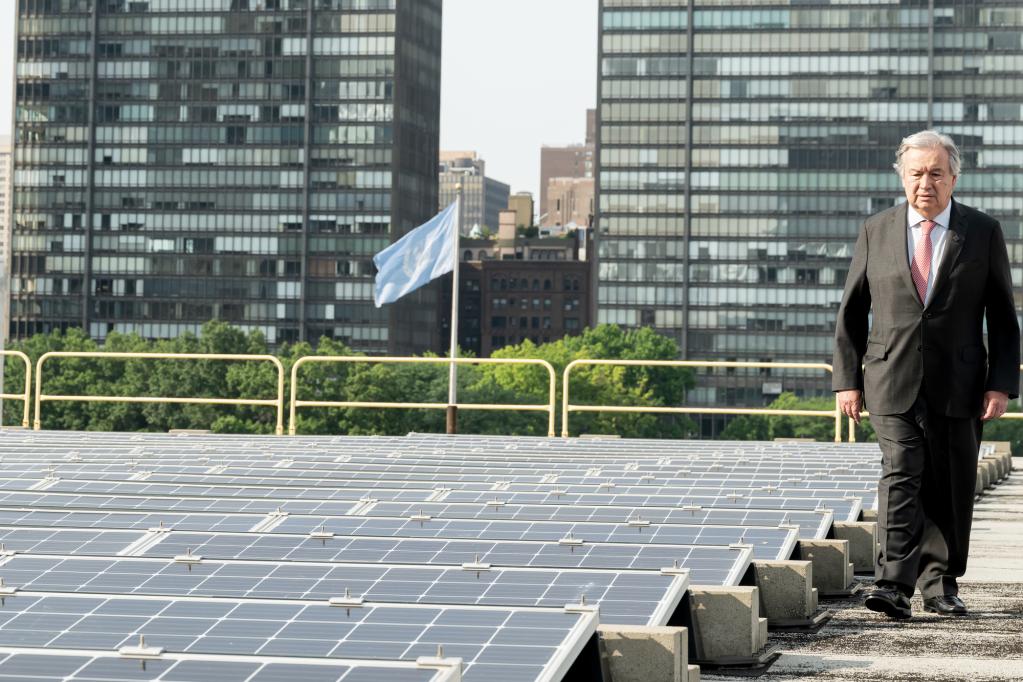
Story
17 July 2025
A Moment of Opportunity: Special Address on Climate Action by United Nations Secretary-General António Guterres
Visit the original page hereSummaryThe Secretary-General will deliver a special address on 22 July 2025 at 9.00 pm Malaysia time, outlining the economic opportunity of the energy transition.DescriptionHe will highlight the progress made since the adoption of the Paris Agreement a decade ago, the remaining barriers and obstacles that stand in the way of accelerated action, and the steps required to turbocharge a renewables revolution that can deliver clean and affordable energy for all.The Secretary-General's address will be accompanied by the release of a technical report prepared on the economic opportunity of the clean energy transition. The report will also identify the priority areas for action to accelerate this new age of energy powered by renewables, efficiency, and electrification.
1 of 5
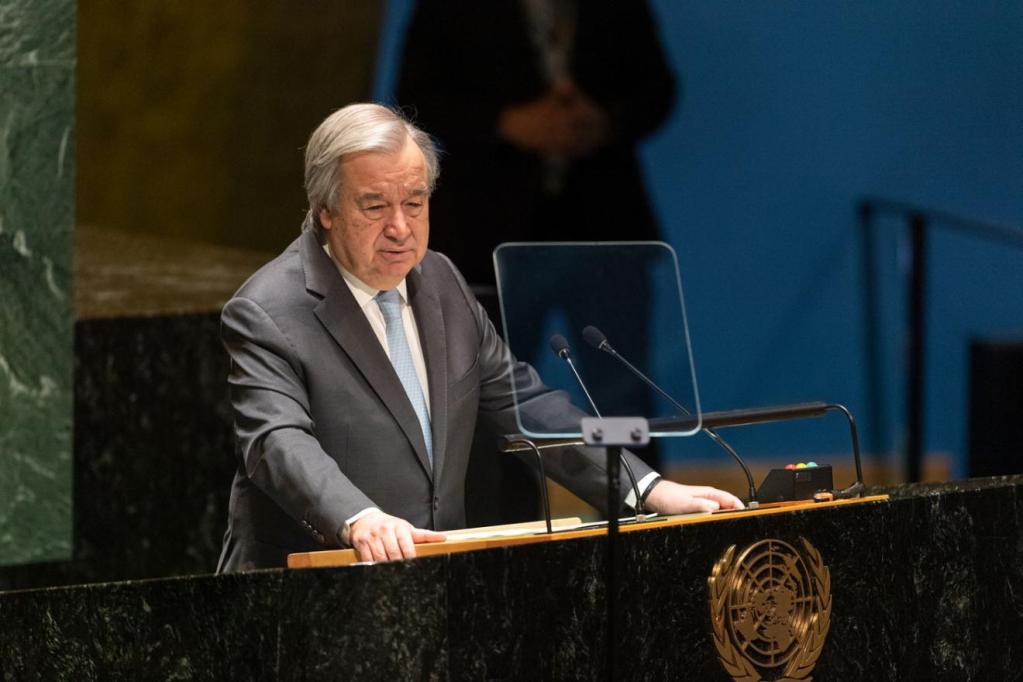
Press Release
21 June 2024
Milestone World Refugee Day marker with first ever commemorative Khutbah sermon in mosques
For the first time, mosques across the Federal Territories of Malaysia will carry a specially-written World Refugee Day khutbah sermon for the Muslim community prayer service held once a week on Fridays. This will be delivered today during the Friday prayer service.UNHCR, the UN Refugee Agency engaged Malaysian religious authorities to develop a khutbah sermon for the Friday prayer service, with messages of compassion, solidarity, and support for refugees. This is an unprecedented development in Malaysia, marking significant strides in more closely engaging Malaysian communities of the Muslim faith.The khutbah sermon will be delivered where the Friday prayer service is performed in all mosques under the administration of the Islamic Religious Department of the Federal Territory (JAWI) within the federal territories of Kuala Lumpur, Putrajaya, and Labuan in Malaysia.The Friday prayer service khutbah sermon is delivered by the prayer leader, or Imam, to the congregation ahead of the commencement of the weekly prayers. In Malaysia, these sermons are standardised and coordinated by authorised state religious bodies.The special World Refugee Day khutbah sermon, titled "Humanitarian Crisis: A Test for Muslims", referenced global statistics on the refugee crisis worldwide and what it meant to be forced to flee.According to the text, “Refugees are not people who emigrate to seek a better life but rather leave their homeland to save their lives from oppression and tyranny involving race, religion, nationality, or social group membership. They deserve proper treatment and assistance to continue their survival.”The sermon called for compassion, and for Muslims to welcome refugees with humanitarian support.It stated, “Refugees are those who migrate to save their lives and religion from oppression and tyranny, not to seek a better life. Second: We are called to help alleviate the burden of refugees with any form of assistance such as shelter, food supplies, financial contributions, clothing, medical needs, and so forth. Third: Allah SWT is actually testing our faith in Him with the arrival of refugees and wants to elevate our status to become true believers (by protecting and helping refugees).”World Refugee Day is commemorated each year on 20 June to honour the millions of people around the globe who are forced to flee violence and persecution. The world community celebrate refugees’ remarkable fortitude and capacity for renewal, despite the daunting challenges they face.Forced displacement surged to historic new levels across the globe last year and this, according to the 2024 flagship Global Trends Report from UNHCR. The rise in overall forced displacement – to 120 million by May 2024 – was the 12th consecutive annual increase and reflects both new and mutating conflicts and a failure to resolve long-standing crises.In his World Refugee Day message, UN High Commissioner for Refugees, Filippo Grandi called on everyone to do more to show solidarity with refugees and work towards a world where they are welcomed, or can return home in peace.“At a time of division and upheaval, refugees – and those hosting them – need us all to pull together. We live in a world where conflicts are left to fester. The political will to resolve them seems utterly absent. And even as these crises multiply, the right to seek asylum is under threat,” said Grandi.Grandi said that a longer-term approach is key – sustainable action in education, energy, food security, employment, housing and more, working with states, development partners and others.He added, “Let’s not leave refugees in limbo; instead, let’s give them the chance to use their skills and talents and contribute to the communities that have welcomed them.“On World Refugee Day and every day, with courage, commitment and compassion, solutions are within our grasp.”Visit the JAWILink is external site for the full text of the World Refugee Day khutbah sermon for the Friday prayer service.
1 of 5
Press Release
21 June 2024
#WorldRefugeeDay: UNICEF’s statement on access to education for refugee and stateless children
On World Refugee Day, we recognize the challenges faced by refugee children globally, who represent over 40 per cent of the world's displaced population. Of the 41,000 refugee children of school-going age registered with UNHCR in Malaysia, none of them have access to formal education. Only 34 per cent have access to informal education through alternative learning centres. This lack of access to formal education is also experienced by many stateless children in Malaysia.Education is a fundamental right, yet too many refugee and stateless children are not in school. Excluded from the education system, children are left without recognized credentials, social networks, mentors, or peer support. Additionally, their lack of legal status also puts them at risk of arrest and detention. As of September 2023, more than 1,400 girls and boys were reportedly held in immigration detention centres in Malaysia. As a result, refugee and stateless children struggle to live dignified lives, stunting their ability to grow to their full potential. All children, regardless of status, should have the opportunity to learn in school, in safety and without fear.The Convention on the Rights of the Child encompasses four interconnected and fundamental principles of non-discrimination, upholding the best interest of the child, the right to life, survival and development, and respect for the views of the child. As we commemorate World Refugee Day, let's remember that every child, no matter their circumstances, has a right to essential support and services like healthcare, education, and social protection. Together, we can work towards strengthening inclusive national systems that benefit all children in line with the Madani Government’s Ihsan, or Compassion principle.
1 of 5
Press Release
25 March 2024
Statement by UNICEF Malaysia on the Citizenship Amendment Bill updates
Read the original statement hereUNICEF commends the government’s welcome steps to not proceed with proposed amendments relating to Malaysia-born stateless children, and foundlings. This decision reflects a responsiveness to public concerns and underscores a commitment to upholding the rights and welfare of vulnerable populations, especially children. UNICEF acknowledges and supports such actions that prioritize the protection of children's rights, aligning with international conventions such as the Convention on the Rights of the Child.It is equally important to recognize that the remaining regressive amendments will impact certain groups of children and pose a threat to their fundamental rights. The proposed amendments, if implemented, risk depriving these children of essential rights to healthcare, education, and family unity. To ensure the protection of children's rights and uphold the principles of equality and inclusivity, it is imperative that these remaining amendments undergo comprehensive review by a Parliamentary Special Select Committee (PSSC). This process will enable a thorough examination of the potential impact of the amendments and allow for the consideration of diverse perspectives and stakeholder input. By subjecting these amendments to full parliamentary scrutiny, we can uphold the integrity of the legislative process and make the best decision for all children in Malaysia.UNICEF stands ready to support the government in this process, building on partnership and joint commitment for realizing children's rights, for an inclusive society where no child is left behind.
1 of 5
Press Release
28 November 2023
KPWKM and UN Malaysia light up Menara Kuala Lumpur in orange - launching the International Day for the Elimination of Violence against Women (IDEVAW) and 16 Days of Activism
Kuala Lumpur, 24 November – KL Tower was lit up in orange today to celebrate this year’s International Day for the Elimination of Violence against Women (IDEVAW) and 16 Days of Activism, beginning Saturday the 25th of November. The evening launch event, organised by The United Nations Population Fund (UNFPA) Malaysia, brought together key stakeholders in the arena towards ending Gender Based Violence (GBV) to collectively and symbolically launch the global call to end violence against women in Malaysia.
Present at the event were Yang Berhormat Dato’ Sri Nancy Shukri, Minister of Women, Family & Community Development (KPWKM), Karima El Korri, United Nations Resident Coordinator for Malaysia, Singapore & Brunei Darussalam, Dr. Asa Torkelsson, UNFPA Malaysia’s Country Representative, Datuk Dr Maziah Che Yusoff, Secretary-General of the Ministry of Women, Family and Community Development and Dr Wan Nur Ibtisam Binti Wan Ismail, Director General of the Department of Women’s Development, alongside other key representatives from government, academia, and civil society.
In her welcoming remarks, Dr Asa Torkelsson began by highlighting the dark reality still faced by millions of women and girls today: “Violence against women and girls sadly remains one of the most pervasive human rights violations that continues to happen. According to the United Nations, globally, 736 million women - that is almost 1 in 3 - have been subjected to physical or sexual intimate partner violence, non-partner sexual violence, or both at least once in their lifetime.” She acknowledged the strides that Malaysia had made so far to address social, legislative and enforcement gaps in the battle against gender-based violence, and highlighted Malaysia’s regional successes including being the first Asian country to introduce a specific law on domestic violence (the Domestic Violence Act 1944), and being the first to develop the trailblazing One Stop Crisis Center (OSSC) to support victims of gender-based violence.
In the Minister’s keynote speech, YB Dato’ Sri Nancy Shukri reminded the audience that the impacts of violence against women were not limited to women, but had widespread societal ramifications. Not only were survivors less likely to participate meaningfully in their communities or labour force, she revealed that gender based violence also had the ability to break down family structures and perpetuate generational cycles of violence. Ultimately, the stunted development of women and their families can impact the socio-economic development of communities and countries as a whole.
“UN Women estimated that the global cost of violence against women amounted to a whopping 1.5 trillion US dollars, stemming from loss of employment and productivity, and major resources required for social services, the justice system, health-care agencies and employers. As a nation or as a global community, we are all worse off when women are disempowered,” she said.
In line with Malaysia’s international commitments to tackling violence and discrimination against women, the Minister described several ongoing government initiatives to address domestic violence: “Operationally, a Committee on Addressing Domestic Violence was established as an institutionalised multi-stakeholder platform for implementing and monitoring concerted efforts to address domestic violence. We are also in the final stages of updating JKM’s Guideline on Handling Domestic Violence Cases, which serves as a reference and guidance to the relevant agencies to coordinate and handle the cases effectively.” The Minister highlighted Malaysia’s recent strides in enacting gender-focused policy, including the Sexual Harassment Act, the Anti-Stalking Section in the Penal Code, and amendments to the Employment Act. She also cited the government’s commitment to gender-responsive budgeting, and lauded the ongoing efforts of dedicated Gender Focal Teams within each Ministry. In line with legislative developments, she hoped to continue launching nationwide sexual harassment awareness roadshows in the new year, especially upon the establishment of the new Anti-Sexual Harassment Tribunal. Lastly, she stressed that addressing violence was a shared responsibility between the government, the private sector and all Malaysians: “We must all play a part in ensuring our workplaces are environments of safety, where there is zero tolerance for harassment or violence of any kind. The private sector has an immense role to play in ensuring that workplace culture proactively evolves to become inclusive, non-discriminatory and in consideration of unpaid care work duties of all employees - female as well as male.”
A panel session titled “Identifying and Strategising Key Social and Legislative Investments needed towards ending Violence against Women in Malaysia” was then held, moderated by Tehmina Kaoosji, Independent Broadcast Journalist. The session drew on the expertise and experience of panellistsACP Siti Kamsiah Hassan, Principal Assistant Director, D11 Unit, PDRM, YBrs Dr Wan Nur Ibtisam, Director General, Women’s Department, KPWKM, Tengku Aira Tengku Razif, Assistant Representative, UNFPA Malaysia, and Sumitra Visvanathan, Executive Director, WAO. The launch event concluded with a press conference featuring the Minister Yang Berhormat Dato’ Sri Nancy Shukri, Datuk Dr Maziah Che Yusoff and Dr Wan Nur Ibtisam from the Ministry of Women, Family and Community Development, alongside Dr Asa Torkelsson and Tengku Aira Tengku Razif representing UNFPA Malaysia.
###
View photos from the event here.
ABOUT UNFPA
The United Nations Population Fund (UNFPA) is an agency under the UN that aims to deliver a world where every pregnancy is wanted, every childbirth is safe and every young person's potential is fulfilled.
MEDIA ENQUIRIES
For further inquiries or any other related media matters, kindly please contact UNFPA Malaysia at malaysia.media@unfpa.org
1 of 5
Press Release
24 October 2023
United Nations Day Malaysia 2023
The United Nations in Malaysia commemorated the 78th anniversary of the United Nations (UN) today in Taman Tugu, Kuala Lumpur.
The event, under the theme Act Now on UN Day and Every Day! amplifies the Act Now! campaign, aimed to inspire people to act for the Sustainable Development Goals and commit to a healthy planet, an inclusive economy, a just society and a world working together.
Leading the commemoration were Ms. Karima El Korri, the UN Resident Coordinator for Malaysia, Singapore, and Brunei Darussalam, and YB Datuk Mohamad bin Alamin, Deputy Minister of Foreign Affairs, Malaysia. The event witnessed the participation of 160 UN staff and over 150 guests, including government officials, members of the Diplomatic Corps, representatives from civil society, youth organizations, religious leaders, academia, the private sector, and the media.
In her address, Ms. El Korri underscored the founding purposes and principles of the United Nations upheld in the organization’s Charter, and said: “As we look back on nearly eight decades of commitment to peace, security, human rights, and development, we acknowledge our successes and setbacks. And with unwavering resolve and resilience, the UN stands as a beacon of international unity and a source of hope for people around the world.”
The United Nations in Malaysia is comprised of 22 UN agencies of the UN Country Team (UNCT), all working in support of Malaysia's efforts to achieve inclusive and sustainable development. UN Resident Coordinator Karima El Korri said: “Malaysia’s unwavering commitment to globally agreed frameworks is unquestionable. We applaud the nation’s fresh perspective on the economy and society outlined in Malaysia Madani, Ekonomi Madani, and the many macro and local-level initiatives drive the country’s transformation. The establishment of the Malaysia-UN SDG Trust Fund is a testimony to the government’s commitment to engage all stakeholders. It is also proof of the strong trust in the United Nations as a results-driven partner.”
YB Datuk Mohamad bin Alamin extended his congratulations to the UN on its 78th anniversary and reiterated Malaysia's firm commitment to continued engagement with the UN. He stated, "Malaysia reaffirms its dedication to continuing cooperation with the UN and its member states, grounded in the principles of mutual respect and international law, as enshrined in the UN Charter.”
We also thank the UN in Malaysia for its continued work supporting the country in reaching its goals for a more sustainable and equitable future. The UN has accompanied us in our journey since independence, and we hope this partnership will continue to prosper.”
YB Datuk Mohamad bin Alamin added that Malaysia has always been an active participant in the UN, engaging with the global community through various means, from co-sponsoring resolutions to our continued support of UN peacekeeping missions, with over 800 personnel participating across various missions. Malaysia is also host to UN Global and Regional centres such as the WHO and UNDP Global Service Centres and UN Humanitarian Response Depot (UNHRD).
The UN Day event at Taman Tugu also featured the "Act Now!" storytelling session, where UN agencies in Malaysia enlightened the audience about their work in areas such as healthy aging, the care economy, sustainable tourism, immunization for hard-to-reach populations, refugee support, green urban spaces, promoting safe migration, inspiring small and medium-sized enterprises, and empowering children through disaster education. Participants also explored the Taman Tugu trail walks.
UN Day, celebrated every year on 24 October, commemorates the entry into force in 1945 of the UN Charter. It amplifies our common agenda and reaffirms the purposes and principles of the UN Charter that have guided us for the past 78 years.
-ends-
1 of 5
Latest Resources
1 / 11
Resources
18 September 2025
Resources
19 February 2025
Resources
16 January 2025
Resources
05 December 2024
1 / 11



